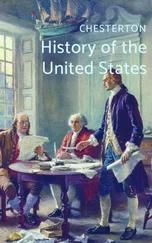Willis Abbot - The Naval History of the United States. Volume 2
Здесь есть возможность читать онлайн «Willis Abbot - The Naval History of the United States. Volume 2» — ознакомительный отрывок электронной книги совершенно бесплатно, а после прочтения отрывка купить полную версию. В некоторых случаях можно слушать аудио, скачать через торрент в формате fb2 и присутствует краткое содержание. Жанр: foreign_antique, foreign_prose, Историческая проза, на английском языке. Описание произведения, (предисловие) а так же отзывы посетителей доступны на портале библиотеки ЛибКат.
- Название:The Naval History of the United States. Volume 2
- Автор:
- Жанр:
- Год:неизвестен
- ISBN:нет данных
- Рейтинг книги:5 / 5. Голосов: 1
-
Избранное:Добавить в избранное
- Отзывы:
-
Ваша оценка:
- 100
- 1
- 2
- 3
- 4
- 5
The Naval History of the United States. Volume 2: краткое содержание, описание и аннотация
Предлагаем к чтению аннотацию, описание, краткое содержание или предисловие (зависит от того, что написал сам автор книги «The Naval History of the United States. Volume 2»). Если вы не нашли необходимую информацию о книге — напишите в комментариях, мы постараемся отыскать её.
The Naval History of the United States. Volume 2 — читать онлайн ознакомительный отрывок
Ниже представлен текст книги, разбитый по страницам. Система сохранения места последней прочитанной страницы, позволяет с удобством читать онлайн бесплатно книгу «The Naval History of the United States. Volume 2», без необходимости каждый раз заново искать на чём Вы остановились. Поставьте закладку, и сможете в любой момент перейти на страницу, на которой закончили чтение.
Интервал:
Закладка:
About the middle of August, the Americans launched their new brig, the "Eagle;" and the little squadron put out at once into the lake, under command of Capt. Thomas Macdonough. Eight days later, the British got their new ship, the "Confiance," into the water. She possessed one feature new to American naval architecture, – a furnace in which to heat cannon-balls.
By this time (September, 1814), the invading column of British veterans, eleven thousand strong, had begun its march into New York along the west shore of the lake. Two thousand Americans only could be gathered to dispute their progress; and these, under the command of Brigadier-Gen. Macomb, were gathered at Plattsburg. To this point, accordingly, Macdonough took his fleet, and awaited the coming of the enemy; knowing that if he could beat back the fleet of the British, their land forces, however powerful, would be forced to cease their advance. The fleet that he commanded consisted of the flagship "Saratoga," carrying eight long twenty-four-pounders, six forty-two-pound and twelve thirty-two-pound carronades; the brig "Eagle," carrying eight long eighteens, and twelve thirty-two-pound carronades; schooner "Ticonderoga," with eight long twelve-pounders, four long eighteen-pounders, and five thirty-two-pound carronades; sloop "Preble," with seven long nines; and ten galleys. The commander who ruled over this fleet was a man still in his twenty-ninth year. The successful battles of the War of 1812 were fought by young officers, and the battle of Lake Champlain was no exception to the rule.
The British force which came into battle with Macdonough's fleet was slightly superior. It was headed by the flagship "Confiance," a frigate of the class of the United States ship "Constitution," carrying thirty long twenty-fours, a long twenty-four-pounder on a pivot, and six thirty-two or forty-two pound carronades. The other vessels were the "Linnet," a brig mounting sixteen long twelves; and the "Chubb" and "Finch" (captured from the Americans under the names of "Growler" and "Eagle"), – sloops carrying respectively ten eighteen-pound carronades and one long six; and six eighteen-pound carronades, four long sixes, and one short eighteen. To these were added twelve gunboats, with varied armaments, but each slightly heavier than the American craft of the same class.
The 11th of September had been chosen by the British for the combined land and water attack upon Plattsburg. With the movements of the land forces, this narrative will not deal. The brunt of the conflict fell upon the naval forces, and it was the success of the Americans upon the water that turned the faces of the British invaders toward Canada.
The village of Plattsburg stands upon the shore of a broad bay which communicates with Lake Champlain by an opening a mile and a half wide, bounded upon the north by Cumberland Head, and on the south by Crab Island. In this bay, about two miles from the western shore, Macdonough's fleet lay anchored in double line, stretching north and south. The four large vessels were in the front rank, prepared to meet the brunt of the conflict; while the galleys formed a second line in the rear. The morning of the day of battle dawned clear, with a brisk north-east wind blowing. The British were stirring early, and at daybreak weighed anchor and came down the lake. Across the low-lying isthmus that connected Cumberland Head with the mainland, the Americans could see their adversaries' topmasts as they came down to do battle. At this sight, Macdonough called his officers about him, and, kneeling upon the quarter-deck, besought Divine aid in the conflict so soon to come. When the little group rose from their knees, the leading ship of the enemy was seen swinging round Cumberland Head; and the men went to their quarters to await the fiery trial that all knew was impending.
The position of the American squadron was such that the British were forced to attack "bows on," thus exposing themselves to a raking fire. By means of springs on their cables, the Americans were enabled to keep their broadsides to the enemy, and thus improve, to the fullest, the advantage gained by their position. The British came on gallantly, and were greeted by four shots from the long eighteens of the "Eagle," that had no effect. But, at the sound of the cannon, a young game-cock that was running at large on the "Saratoga" flew upon a gun, flapped his wings, and crowed thrice, with so lusty a note that he was heard far over the waters. The American seamen, thus roused from the painful revery into which the bravest fall before going into action, cheered lustily, and went into the fight, encouraged as only sailors could be by the favorable omen.
Soon after the defiant game-cock had thus cast down the gage of battle, Macdonough sighted and fired the first shot from one of the long twenty-four pounders of the "Saratoga." The heavy ball crashed into the bow of the "Confiance," and cut its way aft, killing and wounding several men, and demolishing the wheel. Nothing daunted, the British flagship came on grandly, making no reply, and seeking only to cast anchor alongside the "Saratoga," and fight it out yard-arm to yard-arm. But the fire of the Americans was such that she could not choose her distance; but after having been badly cut up, with both her port anchors shot away, was forced to anchor at a distance of a quarter of a mile. But her anchor had hardly touched bottom, when she suddenly flashed out a sheet of flames, as her rapid broadsides rung out and her red-hot shot sped over the water toward the American flagship. Her first broadside killed or wounded forty of the Americans; while many more were knocked down by the shock, but sustained no further injury. So great was the carnage, that the hatches were opened, and the dead bodies passed below, that the men might have room to work the guns. Among the slain was Mr. Gamble, the first lieutenant, who was on his knees sighting a gun, when a shot entered the port, split the quoin, drove a great piece of metal against his breast, and stretched him dead upon the deck without breaking his skin. By a singular coincidence, fifteen minutes later a shot from one of the "Saratoga's" guns struck the muzzle of a twenty-four on the "Confiance," and, dismounting it, hurled it against Capt. Downie's groin, killing him instantly without breaking the skin; a black mark about the size of a small plate was the sole visible injury.
In the mean time, the smaller vessels had become engaged, and were fighting with no less courage than the flag-ships. The "Chubb" had early been disabled by a broadside from the "Eagle," and drifted helplessly under the guns of the "Saratoga." After receiving a shot from that vessel, she struck, and was taken possession of by Midshipman Platt, who put off from the flagship in an open boat, boarded the prize, and took her into Plattsburg Bay, near the mouth of the Saranac. More than half her people were killed or wounded during the short time she was in the battle. The "Linnet," in the mean time, had engaged the "Eagle," and poured in her broadsides with such effect that the springs on the cables of the American were cut away, and she could no longer bring her broadsides to bear. Her captain therefore cut his cables, and soon gained a position from which he could bring his guns to bear upon the "Confiance." The "Linnet" thereupon dashed in among the American gunboats, and, driving them off, commenced a raking fire upon the "Saratoga." The "Finch," meanwhile, had ranged gallantly up alongside the "Ticonderoga," but was sent out of the fight by two broadsides from the American. She drifted helplessly before the wind, and soon grounded near Crab Island. On the island was a hospital, and an abandoned battery mounting one six-pound gun. Some of the convalescent patients, seeing the enemy's vessel within range, opened fire upon her from the battery, and soon forced her to haul down her flag. Nearly half her crew were killed or wounded. Almost at the same moment, the United States sloop "Preble" was forced out of the fight by the British gunboats, that pressed so fiercely upon her that she cut her cables and drifted inshore.
Читать дальшеИнтервал:
Закладка:
Похожие книги на «The Naval History of the United States. Volume 2»
Представляем Вашему вниманию похожие книги на «The Naval History of the United States. Volume 2» списком для выбора. Мы отобрали схожую по названию и смыслу литературу в надежде предоставить читателям больше вариантов отыскать новые, интересные, ещё непрочитанные произведения.
Обсуждение, отзывы о книге «The Naval History of the United States. Volume 2» и просто собственные мнения читателей. Оставьте ваши комментарии, напишите, что Вы думаете о произведении, его смысле или главных героях. Укажите что конкретно понравилось, а что нет, и почему Вы так считаете.











![Hubert Bancroft - The Native Races [of the Pacific states], Volume 5, Primitive History](/books/749157/hubert-bancroft-the-native-races-of-the-pacific-s-thumb.webp)
![Hubert Bancroft - The Native Races [of the Pacific states], Volume 1, Wild Tribes](/books/750126/hubert-bancroft-the-native-races-of-the-pacific-s-thumb.webp)